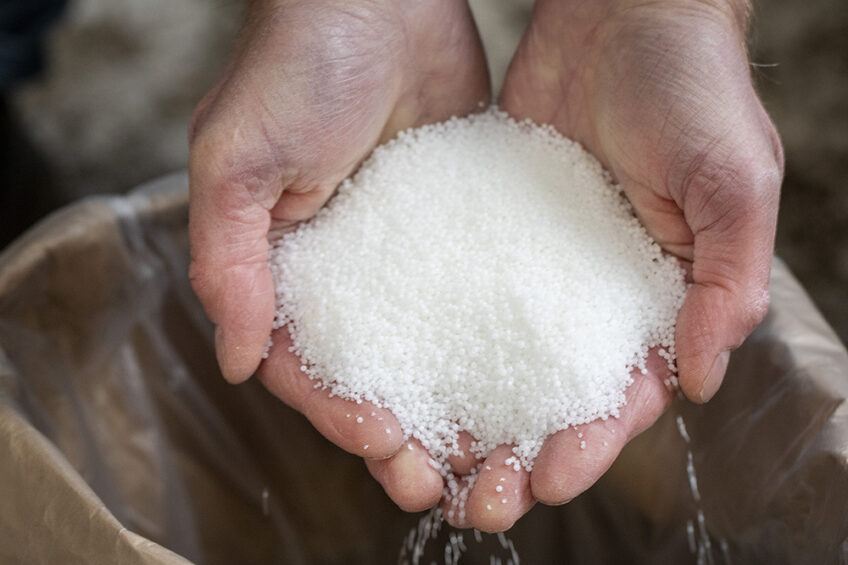Advantages of functional amino acids in nursery pigs

The gastrointestinal tract or gut in nursery pigs is exposed to many disease challenges due to the still developing immune system and immaturity of the digestive tract at this age and these challenges can affect pigs’ performance, health, and welfare.
The main functions of the guts are to ingest, digest, and absorb nutrients to support pig physiological functions and to protect the organism against harmful compounds such as toxins, microorganisms, and dietary antigens.
Antimicrobial agents have been vastly used to control gut diseases, however; there are increasing concerns about antimicrobial resistance and environmental issues. Therefore, it is necessary to find non-antimicrobial disease control strategies to mitigate the impacts of these challenges and to maintain or improve the gut health status of pigs.
Gut health in nursery pigs
In intensive swine farming systems, piglets are usually weaned between 2 and 5 weeks of age, when the gut and immune system are immature. Post-weaning changes generate a stress which usually decreases water and feed intake and in turn affects the gut health and decreases the ability of the host to digest and absorb nutrients. Gut health provides pigs with resistance and resilience to respond and to adapt to the challenges that they encounter, and allow their optimal performance, low mortality and morbidity and good overall health.
What is gut microbiota?
Gut microbiota are microorganisms, including bacteria and other single-celled organisms, that live in the digestive tracts of animals. The gut microbiota has numerous roles benefiting the host, such as digestion and fermentation of carbohydrates, production of vitamins, maintenance of normal functions of the intestinal villi, regulation of the immune responses, and protection from pathogenic bacteria. Density and diversity of gut microbiota is distinct in different intestinal tracts regions such as in jejunum, ileum, and cecum and in various growing periods from early life to adult. Levels and sources of proteins or fibres shape the diversity and composition of the gut microbiota in nursery pigs.
Factors affecting gut microbiota
Several factors affect the diversity and activity of the gut microbiota, including colonisation and associated succession of microbial populations, the age of the pig and the environment it inhabits, antimicrobial agents, dietary composition, supplemental feed, feed processing, feeding methods, disease load, weaning, season, environment, stress, and genetics.
Roles of amino acids in nursery pigs
Amino acids have an important role in the maintenance of gut health, and they are major energy substrates and precursors of functional molecules and proteins that regulate immune responses and oxidative stress.
The demand for amino acids can increase during periods of challenge in nursery pigs. Some amino acids such as aspartate, arginine, cysteine, glutamate or mono sodium glutamate, and glutamine are involved in gut health and can modulate metabolic pathways and functions.
In addition, amino acids modulate gene expression and protein phosphorylation and finally they can serve as microbiota modulators.
Most of dietary glutamine and glutamate, asparagine, aspartate, alanyl-glutamine, and mono sodium glutamate are associated with an increase of energy availability in the gut. Threonine is critical for epithelial barrier function. Glycine, glutamate, and cysteine can promote the expression of genes related with the reduction of oxidative stress. Leucine and glutamate supplementations in feed regulates protein synthesis in different parts of the gut. Tryptophan and arginine supplementation can regulate the gut microbiota composition and activity.
Amino acids can contribute to gut health
Gut microbial ecosystem is essential for normal nutritional, physiological, and immunological functions of the pig. Management practices in intensive swine production such as early weaning, and diet formulation are unintentionally disturbing the gut microbial ecosystem, predisposing pigs to disease. Supplementation of amino acids, based on their roles as precursors of energy and functional molecules, as signalling molecules and as microbiota modulators, can contribute to pigs’ gut health. However, additional work is still needed to investigate synergy between amino acids, effects of amino acids derived metabolites, difference in the metabolic fate between free and protein-bound amino acids while decreasing the effective dose of supplementation.
The information in this article has been extracted from Functional Amino Acids in Pigs and Chickens: Implication for Gut Health











